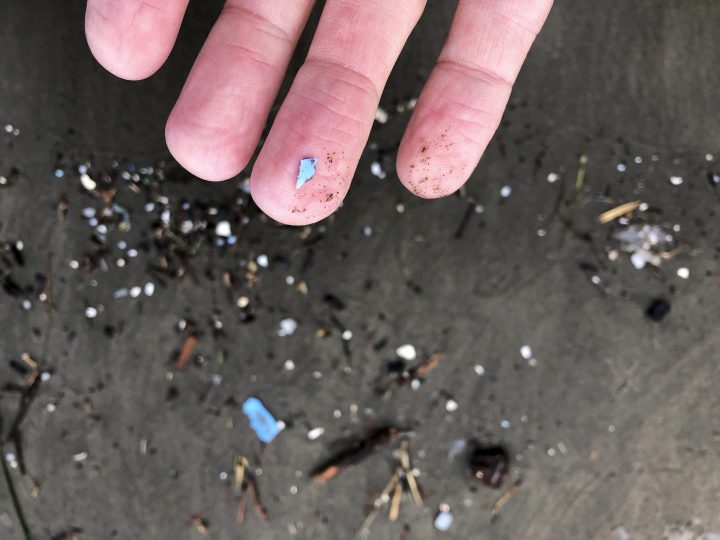The amount of microplastic pollution in the world’s oceans could be at least double what was previously thought, a new study suggests.

Using a fine mesh, researchers were able to find many times the amount of microplastics off the coasts of the U.K. and the United States than previously estimated.
According to the study, which was published in the journal Environmental Pollution, the added microplastic levels increase the estimated amount of microplastics floating in the ocean from between 5-50 trillion to between 12-125 trillion.
Microplastics are classified as any plastic fragment or particle that measures less than five millimetres in length, according to the U.S. National Oceanic and Atmospheric Administration.
The issue of plastic pollution in the world’s oceans has caused concern due to the role such plastics play in harming marine life.
The identification of these smaller plastic particles has since raised further alarm due to such microplastics being the same size as food consumed by zooplankton.

Get daily National news
Scientists have said that detrimental or long-lasting effects to zooplankton — which form the basis of the marine food chain — could have devastating effects on the ocean’s ecosystem.
According to the study, there may even be more microplastic particles than there are zooplankton in some areas of the sea.
“Our results, based on sampling in the U.K. and U.S., suggests we are underestimating the really small pieces of plastic in the marine environment,” said Dr. Pennie Lindeque, lead author of the study and Head of Ecology and Biodiversity at Plymouth Marine Laboratory, in a press release.
“A better understanding of how many microplastics are in our seas and a more detailed description of what type of microplastics they are helps to determine what risk they pose to marine animals and ecosystems, which in turn can help influence societal behavior and drive future policy intervention.”
Microplastics have not only infiltrated oceans but natural areas all across the world — including in Canada.
Last year, scientists found evidence of ice contaminated with microplastics in the Canadian Arctic while a researcher sounded the alarm over rising levels of microplastic levels in Ontario’s Great Lakes.
In a 2019 report, the World Health Organization also warned of microplastics becoming “ubiquitous” in tap, bottled and environmental waters. While the WHO said that as of now, such plastics have no short-term health effects when consumed by humans, they have since warned countries to turn the notch down on their plastic pollution over rising concern for the environment.

Using nets with mesh sizes of 0.1 mm, 0.333 mm and 0.5 mm, Lindeque said that her team found as much as 2.5 times more particles in the smallest net as opposed to the 0.333 mm net, which is usually used to filter microplastics.
Both the marine water samples off the coast of Maine in the U.S. and the Plymouth in the U.K. had similar results, suggesting a sample representation of ocean waters near populated areas, according to the study.
“Based on the relationship between microplastic concentrations identified and extrapolation of our data using a power law, we estimate that microplastic concentrations could exceed 3,700 microplastic per metre cubed, if a very fine net of one micron was used,” said Lindeque in a video explaining the study’s results.

Dr. Ceri Lewis, an author on the study and marine biologist at Exeter University, said that the presence of such high amounts of microplastics poses a high risk to the marine food chain, which holds a pivotal part in maintaining the world’s climate levels.
“Understanding more about the smaller microplastics present in the ocean is important as it is these smaller particles that are more likely to be ingested by the small marine animals, the zooplankton, that form the basis of marine food webs,” said Lewis in a press release.








Comments